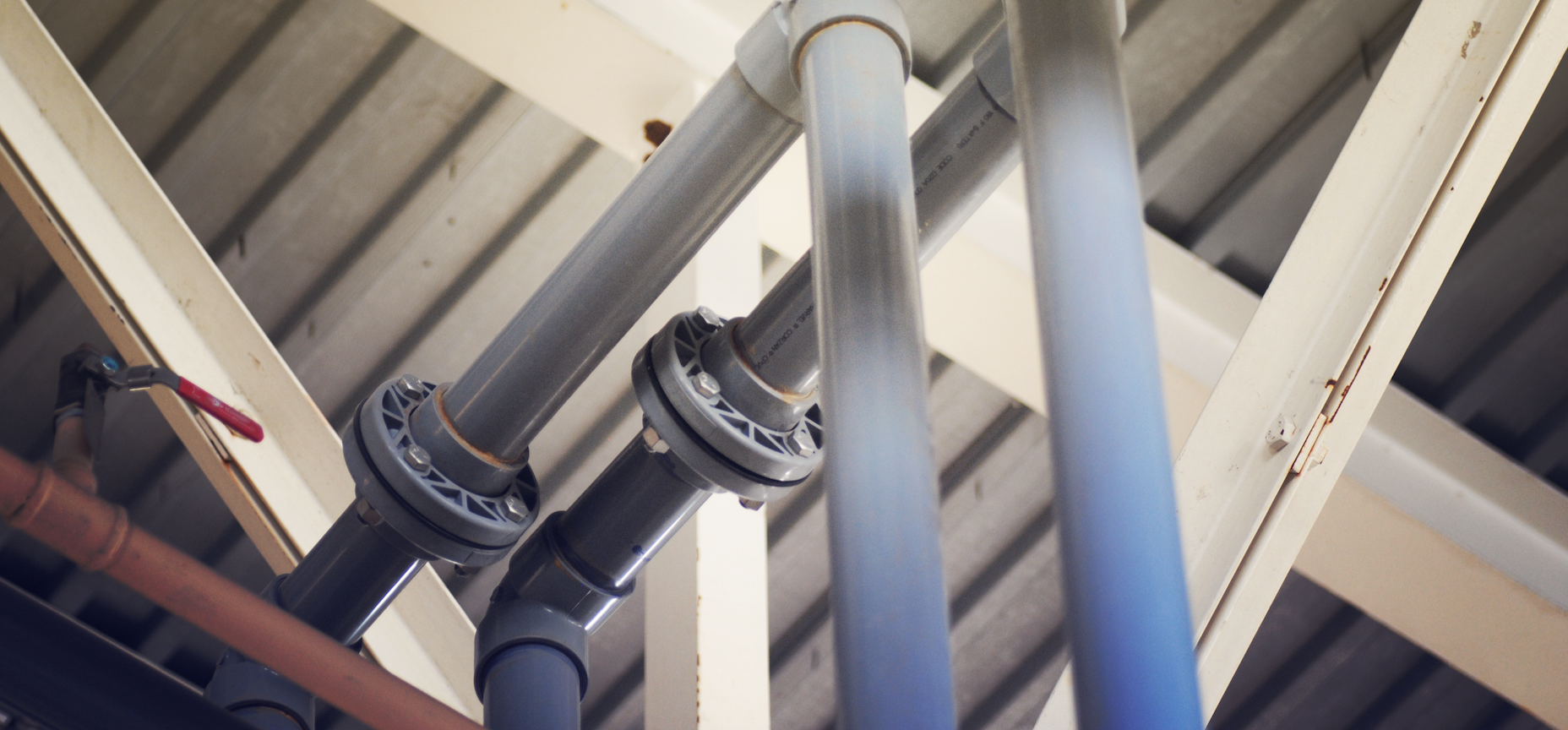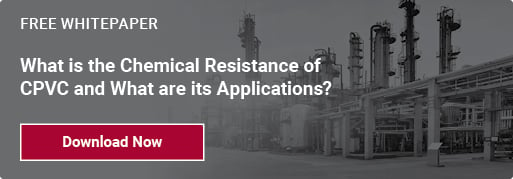WHAT IS CORROSION?
Corrosion is a widespread and expensive problem that impacts every industry around the globe. In 2016, NACE International released the "International Measures of Prevention, Application and Economics of Corrosion Technology (IMPACT)" study, which estimated the global cost of corrosion at approximately $2.5 trillion (USD).
The two-year global NACE study identified prevention as the best way to eliminate corrosion, with potential global savings between 15 percent and 35 percent of the cost of damage. Corzan® Chlorinated Polyvinyl Chloride (CPVC) piping systems provide a proven solution for corrosion as they are strong enough to withstand aggressive chemicals and the high temperatures and pressure common to industrial applications for safer, more productive environments.
Corrosion Occurs in Many Environments
Corrosion can be defined as the deterioration of material – primarily metal -- as a result of various reactions that occur between the material and its surrounding environment. Corrosion can be uniform, pitting, stress cracking, and galvanic, among other forms and typically occurs inside a pipe when it reacts with the material it carries or outside the pipe when the pipe reacts to the world around it. Corrosion can commonly affect metal piping systems due to the natural process of oxidation. Corrosion degrades the metal, which weakens its structure and can lead to leaks or pipe failures.
Internal pipe corrosion is generally caused by the medium the piping system is transporting. Any fluid with pH levels outside of neutral (+/-7) may cause metals to corrode. Ions within acidic (pH < 7) and alkali (pH > 7) fluids and saline solutions attack specific metal elements at the molecular level and eat away at the material. The attack accelerates in the presence of dissolved oxygen and higher temperatures.
Ambient or external corrosion occurs as a result of environmental elements. Piping systems may corrode from the outside to the interior in environments that are close to large bodies of water and salt water. Corrosion is especially an issue, for example, with ships and offshore planforms.
Ambient corrosion is also more likely to occur in cold environments where insulation is applied to the outside of metal piping to protect it from freezing. The Insulation if not properly designed and installed often allows moisture in but does not let it out, which results in external corrosion.
Vapors may also create a corrosive environment. A plating shop with dip tanks that are open, for example, will produce vapors that corrode. Various chemicals used to treat water in a waste water treatment facility will also create corrosive vapors.
The Impacts of Corrosion
Corrosion affects flow rates and efficiency while weakening pipes, which can result in costly downtime and expensive repairs. Corrosion may also cause loss of containment (LOC), leading to leakage or streaming of liquids (including acids) that are used in the industrial process.
Many acids are clear like water and an unsuspecting worker could get acid leaking from a pipe on his or her skin and possibly suffer third-degree burns. Metallic ions introduced to a product stream can cause a process upset that results in off-spec products and/or products unable to perform as expected. In a latex paint facility, for example, metal may contaminate paint, resulting in biological growth or fouling of the product.
Pieces of metal that result from corrosion also have the potential to change the rate of reaction in an industrial process. The metal, for example, may act as a catalyst and cause an immediate exothermic reaction that results in a dangerous level of heat.
Selecting the Right Corrosion-Resistant Piping
The most effective design/build teams generally combine experienced engineers and individuals who possess certain levels of expertise with those who have a special interest in exploring and adopting innovative products and techniques. When you select a piping system for your corrosive environment, make sure you involve a materials specialist who possesses a broad knowledge and a willingness to consider new innovations. And, make sure the team considers all of the system options.
You should also consider piping systems from trusted sources such as Lubrizol. Corzan CPVC experts are materials specialists and offer consultation to design/build teams, owners, contractors and subcontractors. New products and technologies are constantly introduced to the industrial construction market, and Lubrizol can supply the educational tools required to help your team make informed decisions.
The Corzan CPVC website offers product and application insight via spec sheets, brochures, e-books, test videos, case studies and more. The site also provides the Corzan CPVC Chemical Resistance Chart, showing how Corzan CPVC performed against 400 different chemicals, including highly corrosive chemicals.
Designers and engineers sometimes consider Teflon™ lined piping as an alternative to metal or carbon steel for harsh environments common to the chemical and petro-chemical industries. Teflon lined piping generally costs more than CPVC piping but is unlikely to provide a longer service life than CPVC.
DID YOU KNOW?
CPVC does not rust or corrode. Like any material, CPVC will eventually degrade over time or if subjected to incompatible materials. However, CPVC is inherently corrosion-resistant and cannot oxidize. It also withstands many chemicals, even at high pressures and temperatures.
Corzan CPVC piping systems are highly engineered thermoplastic to eliminate internal and ambient corrosion that eats away at metal, and they meet the heat and long-term pressure bearing demands common to many industrial processes. Corzan CPVC piping is produced by quality manufacturers and has undergone rigid testing that exceeds ASTM 441 standards. It is clear through continued testing and experience that not all materials are created equal.
Your design/build team can depend on Corzan CPVC to prevent corrosion to pipes. Corzan CPVC piping is a trusted name in the industrial sector. with over 60 years of proven success in a range of challenging industrial environments, To learn more, contact a Corzan Piping System Consultant for a free suitability review and technical assessment.


